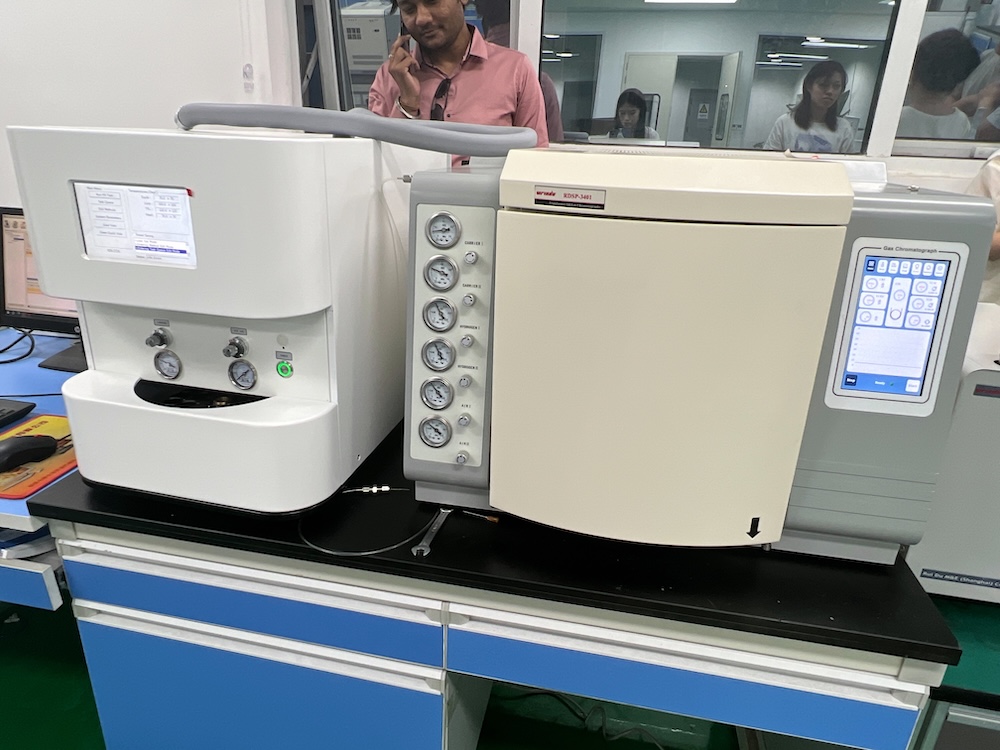How to Optimize the Transformer Oil Chromatography Testing Process
Optimizing the transformer oil chromatography testing process is essential for improving testing efficiency, enhancing result accuracy, and ensuring equipment safety. The following sections detail how to optimize this process from sampling operations, sample preservation, degassing methods, equipment maintenance and calibration, data analysis, to result validation.
1. Optimization of Sampling Operations
Sampling is the foundation of oil chromatography testing, and optimizing this stage can significantly enhance testing accuracy.
Sampling with Syringes:
Thoroughly Empty Residual Oil: Before sampling, ensure the sampling valve is completely emptied. It is recommended to release an amount of oil equal to four times the dead volume or to perform the sampling when the oil temperature exceeds 40°C.
Ensure Sealing: All connections must be airtight, using hoses of appropriate length and keeping the syringe piston clean to ensure smooth oil sample injection.
Natural Sampling: Avoid manually pulling the piston; instead, let the oil sample flow slowly into the syringe under the device's natural pressure. The suggested sampling volume is 50-60 ml, which should then be adjusted to 40 ml before quickly sealing it with a cap filled with oil.
Improved Small Bottle Sampling:
Pre-treatment and Cleaning: Clean the valve body before sampling, discharge any residual oil, and rinse the bottle with the sample oil 2-3 times to avoid contamination.
Control Flow Rate: Regulate the flow rate to prevent oil from impacting the bottle walls, avoiding cavitation.
Labeling and Sealing: Cover the bottle immediately after sampling and wipe the exterior clean, clearly labeling it with the device identification.
2. Optimization of Sample Preservation
Sample preservation directly impacts the accuracy of the results; here are several key measures:
Light-Proof Storage: Samples should be stored away from light to prevent photochemical reactions that can alter gas composition.
Time Control: The storage period for samples should not exceed four days; expired samples need to be transferred to a syringe for preservation.
Bubble Management: Any bubbles that form during storage should be retained for subsequent analysis.
3. Optimization of Degassing Operations
The degassing process aims to remove dissolved gases from the sample, ensuring the accuracy of the detected data:
Oscillation Degassing Method: Inject 5 ml of nitrogen gas into a 100 ml syringe containing 40 ml of oil, oscillate at 50°C for 20 minutes, then let it sit for 10 minutes. Precise control of oscillation and resting times is crucial for enhancing degassing effectiveness.
4. Equipment Maintenance and Calibration
Regular maintenance and calibration of equipment are essential for ensuring reliable test results:
Regular Calibration: Conduct periodic calibrations of the chromatograph to ensure its parameters remain within standard ranges.
Equipment Cleaning: Maintain cleanliness both inside and outside the instruments, preventing dust and impurities from entering, and regularly replace critical components such as chromatography columns.
5. Optimization of Data Analysis
Data analysis is a critical step in evaluating test results, and the following points should be noted:
Use of Software Tools: Employ advanced data analysis software for trend analysis to quickly identify abnormal gas compositions.
Batch Processing: Arrange testing sequences strategically to process samples in batches, thereby improving efficiency.
6. Result Validation and Feedback Mechanism
Ensuring reliable test results requires ongoing validation and feedback:
Re-testing and Verification: Conduct re-testing for abnormal results or validate using different methods to ensure reliability.
Feedback and Adjustment: Establish a feedback mechanism to adjust maintenance strategies based on results, enhancing transformer operational reliability.
7. The Necessity of Personnel Training
An integral part of the optimization process is enhancing the skills of operators:
Regular Training: Strengthen training for operators to improve their understanding of chromatography technology and operational skills.
Technical Updates: Encourage technical personnel to learn the latest chromatography technologies and analytical methods to stay in sync with industry standards.
By comprehensively implementing the above measures, the efficiency and accuracy of transformer oil chromatography testing can be significantly improved, providing a strong guarantee for the long-term stable operation of electrical equipment. This enhancement is not only a technical improvement but also a vital step in ensuring equipment safety and enhancing the reliability of power supply.





